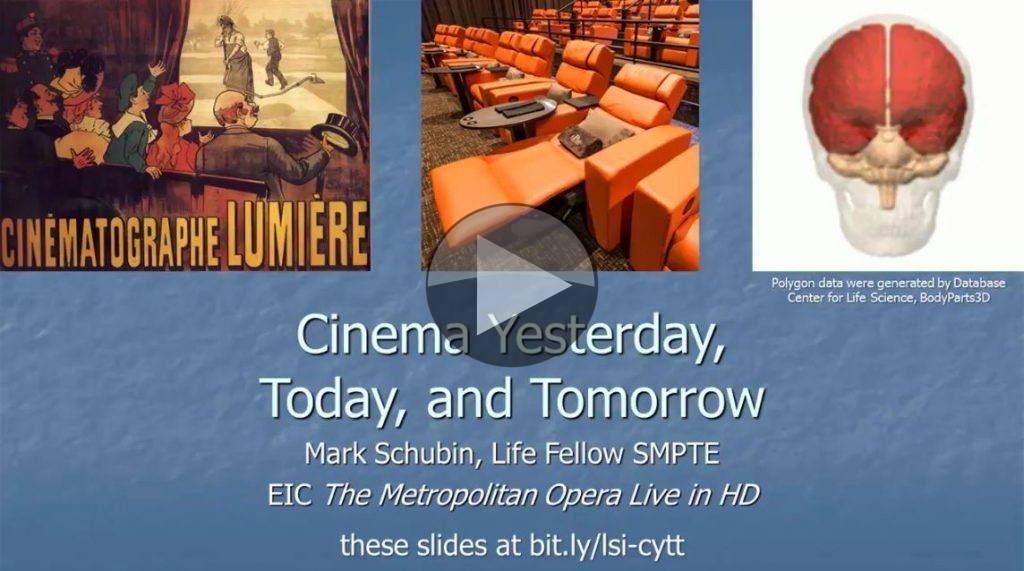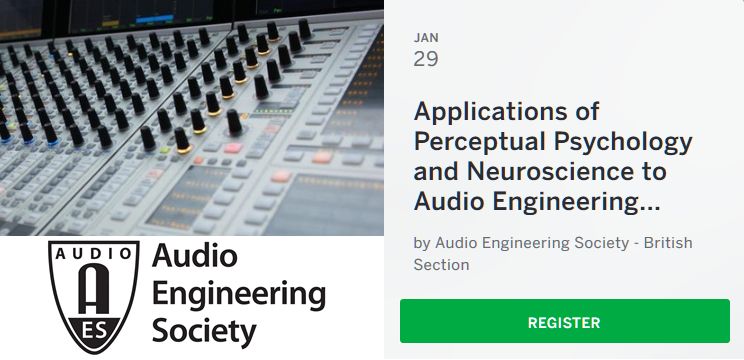
An important reminder of the psychology and biology of watching films – it’s not just about technology.
As we approach the 125th anniversary of people paying to watch movies, Mark Schubin, who has been working in the field for 50 years, takes us on a journey from seemingly undirected early “actualities,” through a century of innovations, to some possible futures for the field. Can two people see completely different things in the same image? Why does a cinema viewer’s attire matter? Is there a correlation between ticket price and enjoyment?
psychology
Meeting: Applications of perceptual psychology and neuroscience to audio engineering problems
Date: 29th January, 18:30 GMT
Location: University of York, Department of Theatre, Film and Television
The AES North of England invite Cleopatra Pike and Amy V. Beeston to talk about how human psychology and neuroscience are involved in the design of many audio products. Firstly, they can be used to determine whether the products suit the needs of the people they aim to serve. ‘Human-technology interaction’ research is conducted to ascertain how humans respond to audio products – where they help and where they hinder. However, issues remain with this research, such as getting reliable reports from people about their experience.
Secondly, psychology and neuroscience can be used to solve engineering problems via ‘human inspired approaches’ (e.g. they can be used produce robots that listen like humans in noisy environments). To fulfil this aim audio engineers and psychologists must determine the biological and behavioural principles behind how humans listen. However, the human hearing system is a black-box which has developed over years of evolution. This makes understanding and applying human principles to technology challenging.
This evening hosts a discussion on some of the benefits and issues involved in an interdisciplinary approach to developing audio products. We include examples from our research investigating how machine listeners might simulate human hearing in compensating for reverberation and spectral distortion, how machine listeners might achieve the perceptual efficiency of humans by optimally combining multiple senses, and how the input from tests on humans can be used to optimise the function of hearing aids.


